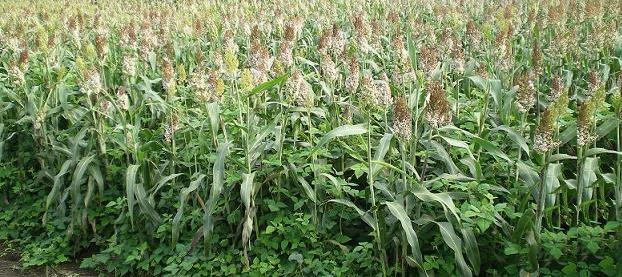The aim of our study was to assess the potential role of greenleaf desmodium, Desmodium intortum in a combined management of striga and stemborers, which would lead to development of a suitable push–pull strategy for sorghum. Relative to other Desmodium spp., D. intortum withstands drought conditions better and wilts less. It also has a relatively higher nitrogen-fixing ability, over 300 kg N/ha per year under optimum conditions and, therefore, is more appropriate as an intercrop for the degraded environments where sorghum cultivation is widely practiced.
Striga hermonthica counts were significantly lower in the sorghum–D. intortum intercrop than in the sorghum monocrop plots in the on-station trials at icipe Thomas Odhiambo Campus in western Kenya. They were also significantly lower in the intercrop than in the monocrop plots during the entire study period in the on-farm trials in western Kenya. Similarly, there were significantly lower proportions of stemborer-damaged sorghum plants in the intercrop than in the monocrop plots in both trials. These observations were associated with significantly taller sorghum plants and higher grain yields in the intercrop than in the monocrop plots in both trials, and represent the first report of a combined control of both pests using a single method, with associated enhanced grain yields in sorghum. We are currently developing a suitable push–pull strategy for sorghum as has been done for maize.
|


 Research Partners
Research Partners